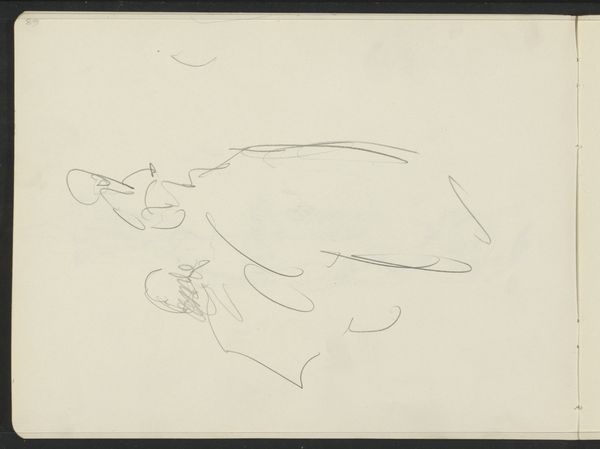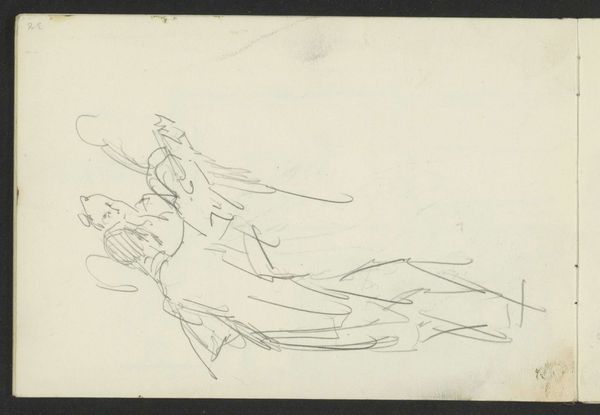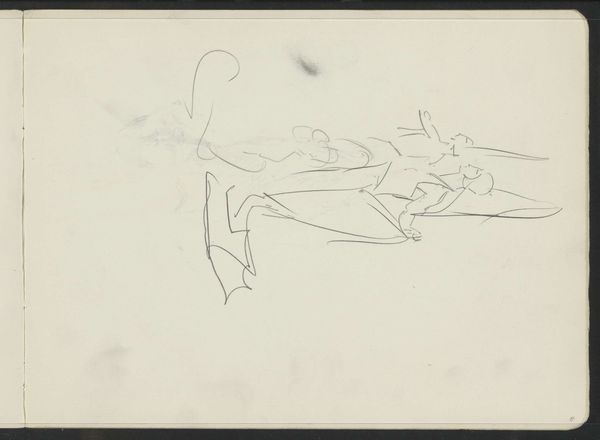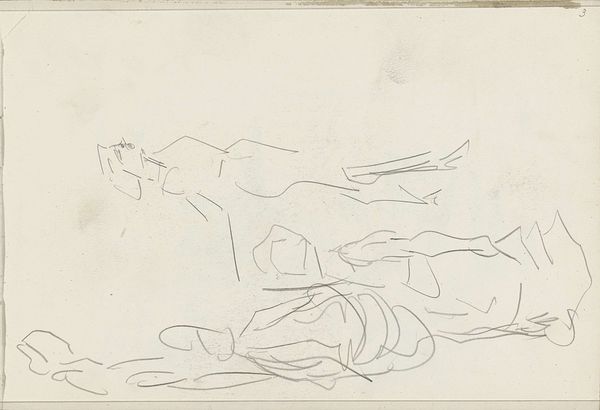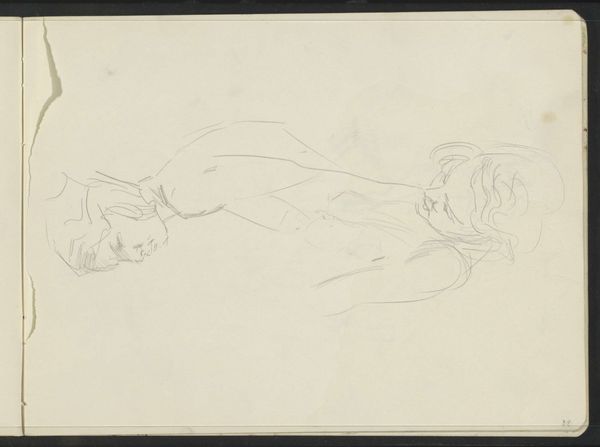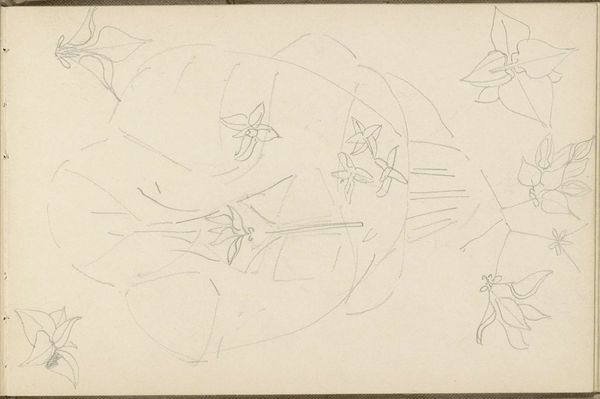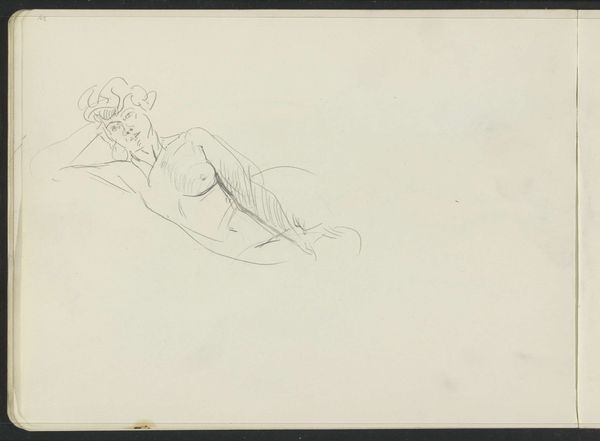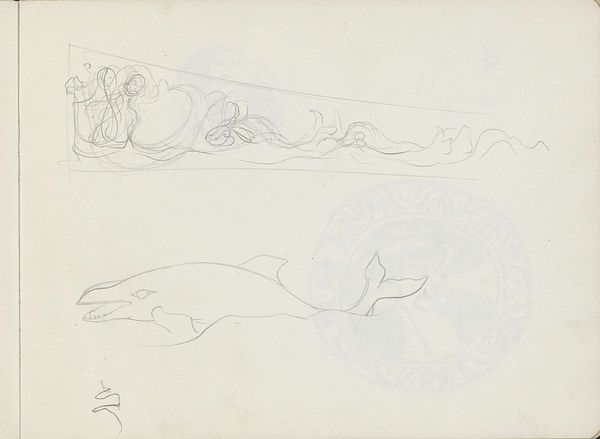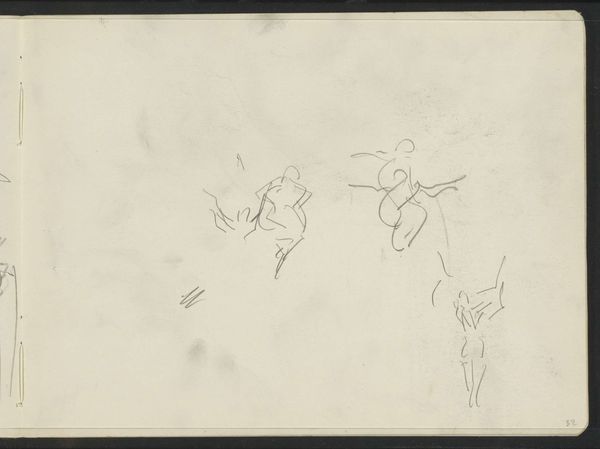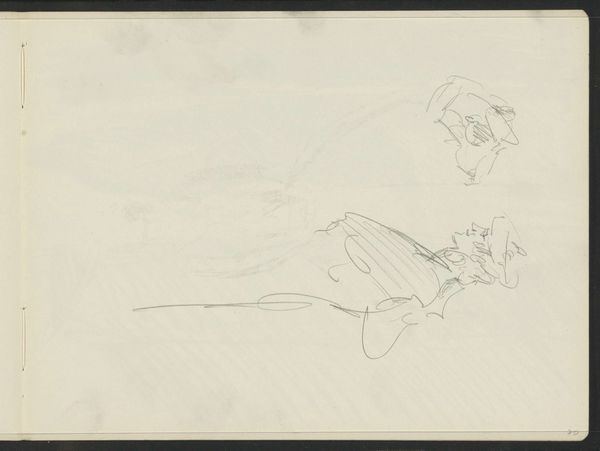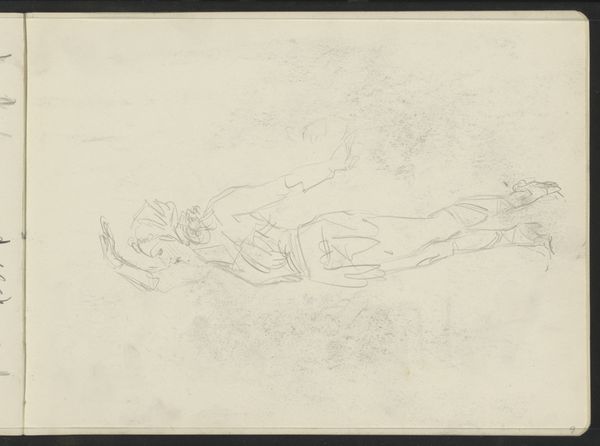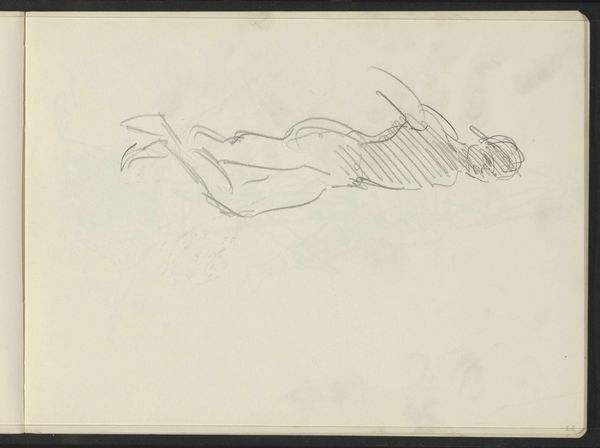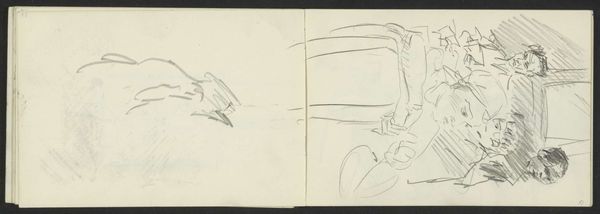
Copyright: Rijks Museum: Open Domain
Curator: Here we have Isaac Israels' "Figuurstudies," figure studies done sometime between 1915 and 1925. They are rendered in pencil on paper, part of the Rijksmuseum collection. Editor: My first impression is one of tentative observation, a capturing of fleeting forms rather than a static, posed image. It feels light, almost ephemeral. Curator: Precisely. The artist's impressionistic style is evident in the economy of line, the way the forms are suggested rather than definitively outlined. The pencil, of course, facilitates this sketch-like quality. Editor: And that speaks to process—a direct and immediate engagement with the body. I am thinking about the choice of paper, perhaps inexpensive or readily available, supporting a practice of repetitive study and exploration of form and space, but always linked with his personal, bodily engagement during production of this sketch. Curator: Interesting perspective. The nude figures also play with the dialectic of concealment and revelation, no? Notice the draping fabric. Its strategic placement draws the viewer's gaze even as it obscures. There's a tension, an oscillation between the revealed form and the covered form, essential to how the viewer decodes the image. Editor: I read it more as a practical consideration. Fabric was often used in the studio—to provide warmth or simply to manipulate light and shadow across the model's body. It’s the tangible realities of the studio coming through; considerations that underpin art making and challenge notions about "pure" aesthetic forms, Curator: Fair enough, but let's consider that Israels himself was embedded in a complex social milieu. As such, his seemingly straightforward rendering can be interpreted within the cultural discourse surrounding nudity, representation, and, of course, the male gaze. Editor: Which is mediated, quite literally, by the materials he employs. Paper, pencil, and fabric; these become vital to both the artist's process and our understanding of the historical, physical process behind art production, Curator: A very material way of seeing it. Still, regardless of our differing approaches, it seems undeniable that Israels captures something rather profound, a fleeting beauty perhaps, but one built on material labor. Editor: Yes, it is the product of material acts; seeing the image for that fact creates deeper historical contexts and acknowledges the role materials and process can offer within fine art, Curator: An interesting paradox, indeed, how the immediacy is also caught with physical limitations and societal pressures. Thank you.
Comments
No comments
Be the first to comment and join the conversation on the ultimate creative platform.
